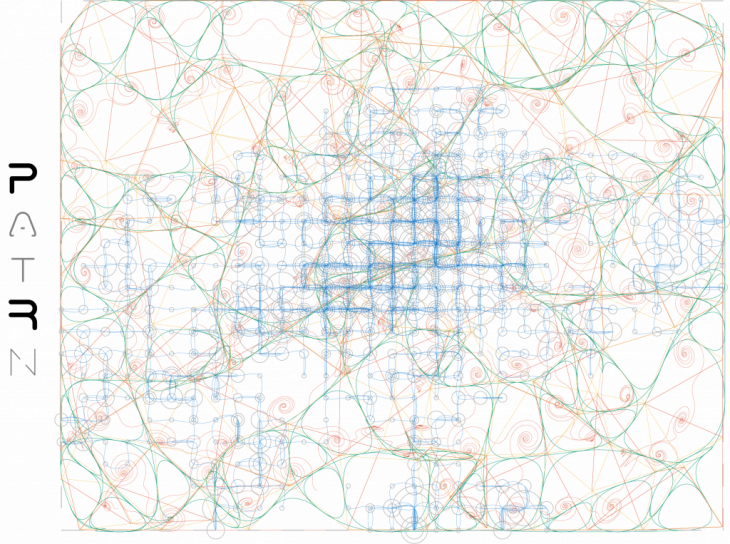
The diagram is a representational top view of the Optimised output
![]()
The exercise touches on subjects relating to optimise an input surface, to a degree where the most essential or structural parts and least load bearing parts, are categorised into five categories. These categories vary in their end result where the most structural parts will be the most highly reinforced and vice versa. Fixed offsets from the input surface will define the first degree of boundary, the second degree of boundary will be the reparametrized panels and the third degree of boundary will be from the Optimisation of the surface. While the first degree boundary is established for a seamless language in execution, the second overlapping with the third degree boundaries respond to assembly strategies and execution of the structure. With random movement or branching within the boundaries, while communicating its position, the end effector would imbibe a solid and void language to portray the optimised surface.
Keywords: Optimisation, Boundary, Random Movement and Communicating position
![]()
The user inputs a surface (a few examples are indicated):
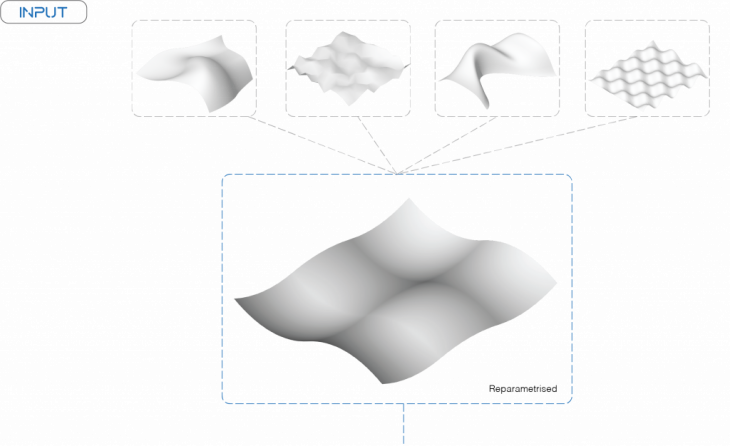
The input surface will be subdivided into fabricatable boundaries for ease of production, transport and assembly:
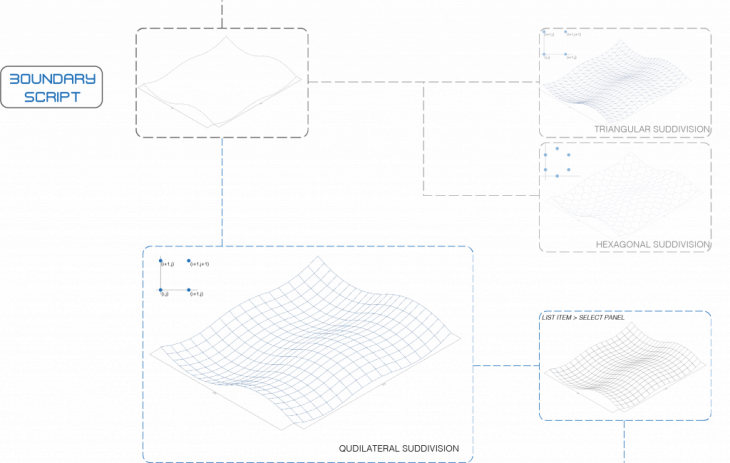
The next level of boundary wishing the fabricatable boundaries is based on Optimisation of the surface and dictates one of the five structural conditions ranting for heavily reinforced to least (shown below is highly reinforced):
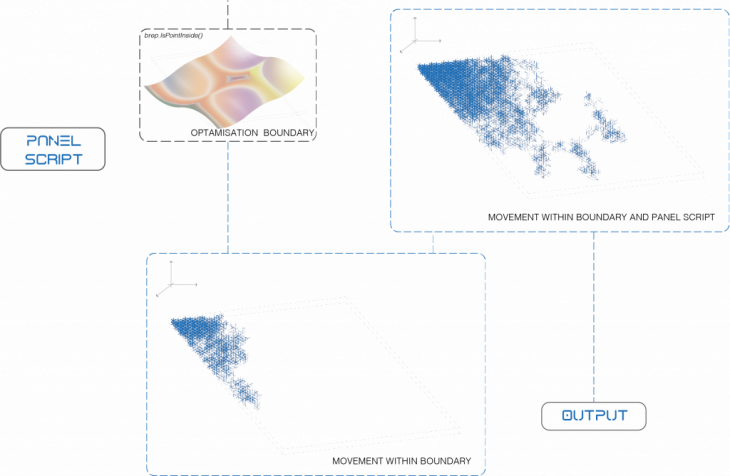
![]()
Based on the optimisation boundary five distinct panellisatihn categories are created,the weaker sections of the surface are strongly reinforced, the slightly stronger sections have lesser compared to the previous and this trend of balancing out continues; such that the resulting normal forces and shear forces will result in equilibrium throughout, ergo leading to self standing structure(no columns) and reduction of material used.
- Grade 1 reinforced panel:

- Grade 2 reinforced panel:
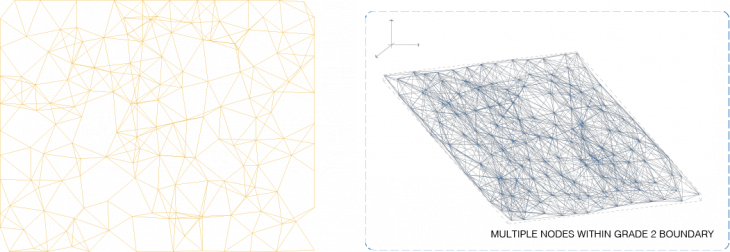
- Grade 3 reinforced panel:
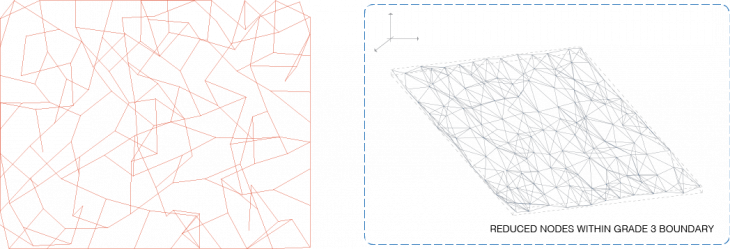
- Grade 4 reinforced panel:

- Grade 5 reinforced panel:
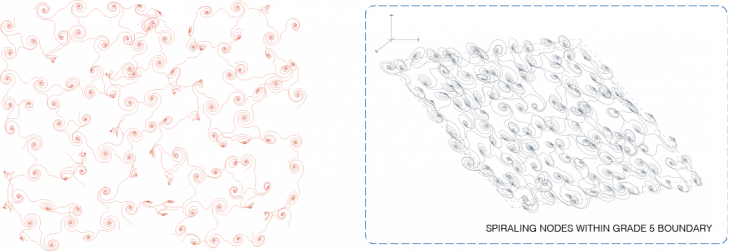
![]()
The research is is in its infancy with fluke success in its Grade 1 reinforced testing of suiting all three boundary conditions (Surface, Subdivided Panel and Optimisation), while the others just managed to suit the first two boundary conditions. Despite its minor success in Grade 1, there are plenty of corrections with the highest priority, being limiting the the self collision. At this stage the other panel types are untested, but the logic should work. The panel types are created through object oriented programming and called out though a Dictionary and Tree; this is done in order to allow flexibility to the user to intervene and define where they would like more void than solid, while optimising the surface as a result. The next panel pattern will always pick up from where the previous one stops i.e. on the optimised boundary.
On the basis of converting lines to other elements the application of this self standing roof can be diverse from, museum / gallery roofs allowing controlled light, to pavilions and so forth.